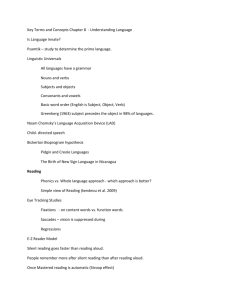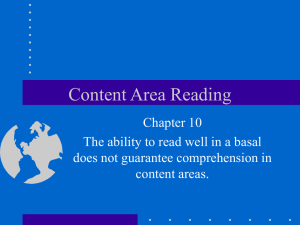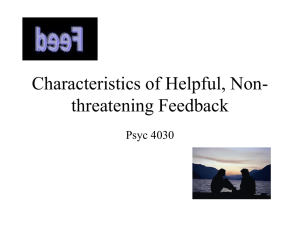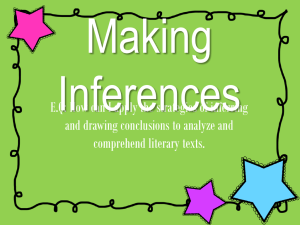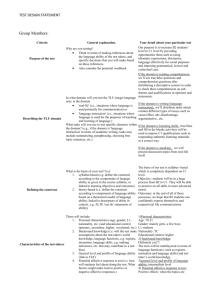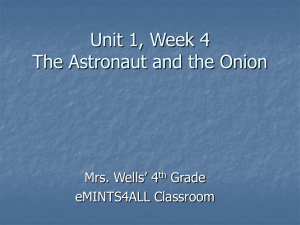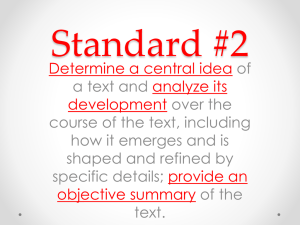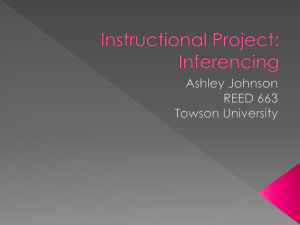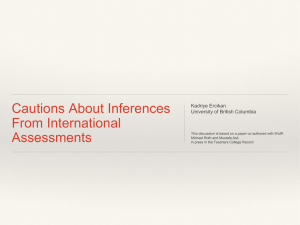Helping students learn to make inferences while reading:
advertisement
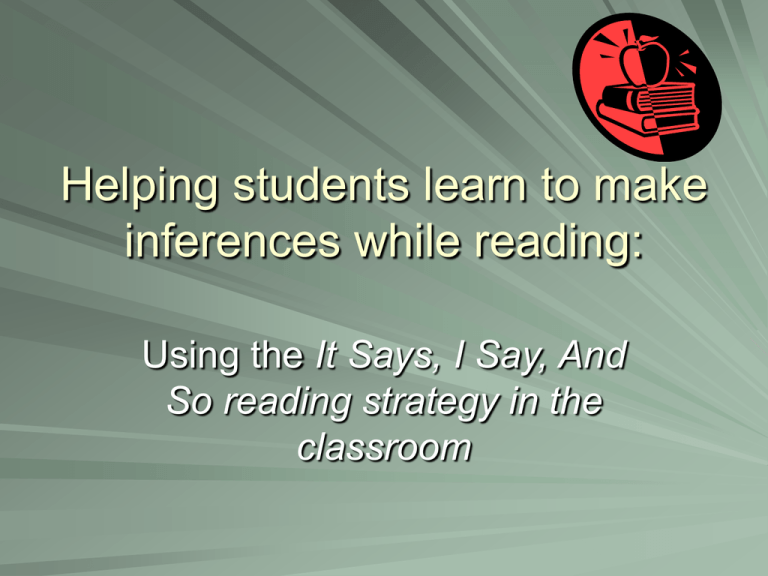
Helping students learn to make inferences while reading: Using the It Says, I Say, And So reading strategy in the classroom What the research says about reading comprehension: The goal of reading comprehension is to construct meaning while reading Proficient readers are able to construct meaning from text by drawing inferences during and after reading Inferring allows readers to “read between the lines”, “to read at a deeper meaning”, and “to make their own discoveries about the text” When comprehension strategies (such as drawing inferences) are directly taught to students, this instruction has a positive effect on students’ general comprehension. Why do students struggle with making inferences? Inferential questions are not answered directly in the text. Students needs to go beyond the text which means using higher-level thinking skills. Making inferences relies on what it says in the text plus the reader’s background knowledge. Many of our reluctant readers do not have the sufficient background knowledge to able to make the inferences asked for in the text. How can we help? Provide our readers with enough background knowledge before reading so that they are able to make inferences from the text Directly teach students how to make inferences. Don’t just assume that they will be able to get there on their own! How well can you make inferences? He put down $10 on the counter. The woman gave him back $4. The person next to him gave him $3, but he gave it back to her. So, when they went inside, she brought him a large bag of popcorn. • Where are the man and the person next to him? • What is the relationship between the man and the person next to him? • How much does the popcorn cost? It Says, I Say, And So Where are the man and the person next to him “on the counter” “a large bag of popcorn” I know that popcorn is usually bought at the movies or a sporting event The man and the person next to him are probably at the movies or a sporting event What is the relationship between the man and the person next to him? “he put down $10” “they went inside” “she bought him a large bag of popcorn I know that when a man pays for a woman and they go somewhere together, it means they may be on a date The man and the person next to him may be boyfriend/ girlfriend or husband/ wife Now, please watch a 5 minute DVD of this strategy being used in a classroom Why Mrs. Lewis likes this strategy! It breaks down the process of making inferences and shows students how to do it It shows students how to focus on their background knowledge to make an inference. It forces students to go back into the text- look for text evidence and re-read. It teaches students the difference between literal and inferential questions so when they are asked inferential questions in other classes, they know that they need to think about the text and their background knowledge in order to answer the question. And Most of All.. • This strategy allows students to become independent and metacognitive learners who can reflect on their learning and thinking and apply strategies when needed to help them better understand the text. References • Beers, K. (2003). When Kids Can’t Read What Teachers Can Do: A Guide for Teachers 6-12. Portsmouth, NH: Heinemann. • Harvey, Stephanie, and Anne Goudvis. (2007). Strategies That Work: Teaching Comprehension for Understanding and Engagement. Portland, Maine: Stenhouse.
